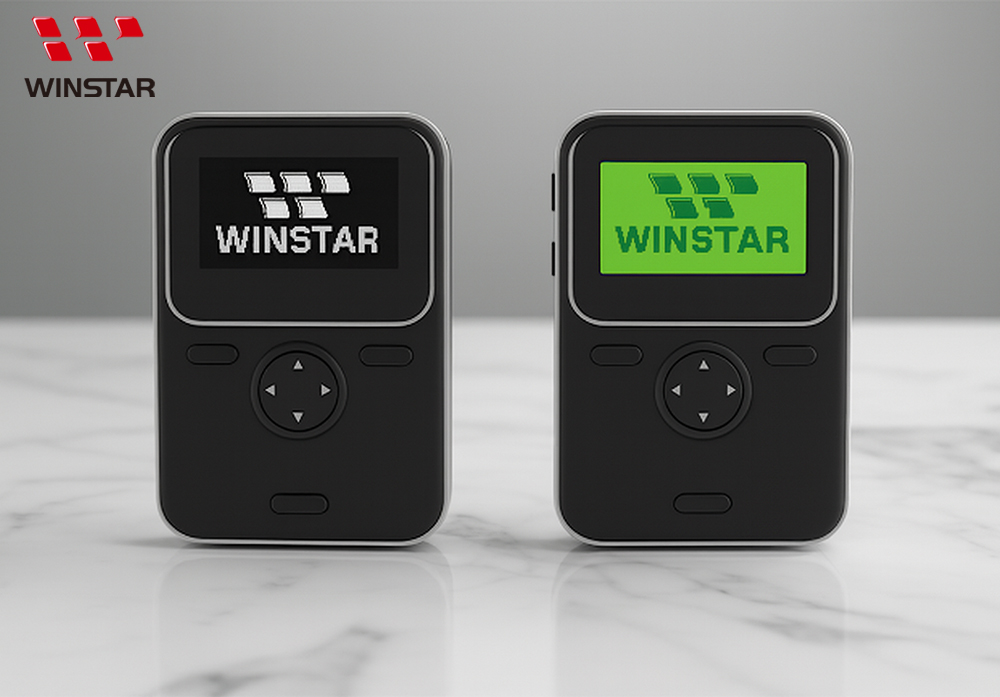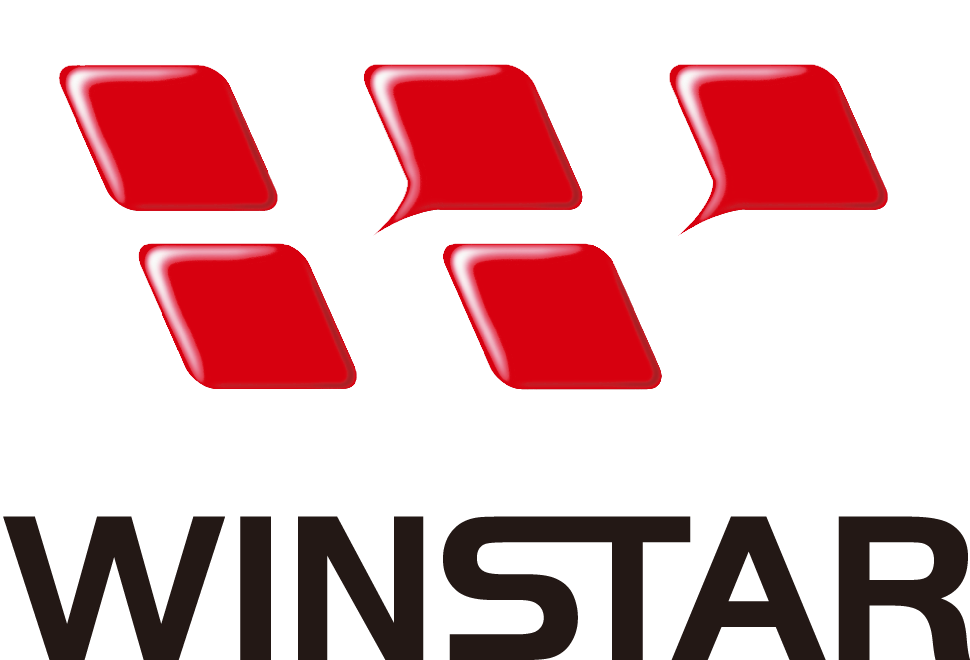
In hardware development, the choice of a display is one of the few critical decisions that define a product's feel at first glance. It simultaneously impacts BOM cost, user experience, and the product's lifecycle.
STN technology, with its proven and stable architecture, continues to deliver clear and reliable information displays, serving a wide range of industrial applications with consistent performance and value.
As product design evolves toward higher visual standards and greater structural flexibility, PMOLED technology—featuring self-emissive pixels, high contrast, wide viewing angles, and an ultra-thin profile—opens up new possibilities for innovation and design freedom.
Compared with STN, PMOLED offers a more refined visual experience and a modern interface appearance. However, when it comes to real-world implementation, key factors such as power efficiency, wide-temperature stability, and lifespan must still be validated through data.
This article presents quantitative comparison data to help you evaluate the strengths of both STN and PMOLED from a technical perspective—and make an informed decision for a display solution that best supports your product’s performance and market goals.
PMOLED vs. STN: A Technical Comparison for User Experience & Design
1.PMOLED's UX Advantage: Superior Viewing Angle, Speed, and Quality
Superior Wide Viewing Angles: Crystal Clear from Any Perspective
- PMOLED: As a self-emissive technology, it boasts a nearly perfect omnidirectional viewing angle. Color shift is minimal, and the Contrast Ratio (CR) easily remains above 10,000:1 even at an extreme 80° angle, ensuring informational consistency from all perspectives.
- STN: Its visible viewing area is limited by the specified viewing angle design. Once the viewing direction deviates by about 30° from its optimal angle (such as 6H or 12H), contrast and grayscale performance may decrease. Therefore, this characteristic should be considered when designing products intended for multi-angle viewing or multi-user operation.
Response Speed: Display Characteristics in Low Temperatures
- PMOLED: Features microsecond-level response times. The pixel response time (Rise Time + Fall Time) is typically < 20µs at 25°C. Even in the extreme cold of -40°C, the speed remains in the microsecond range, providing the physical foundation for displaying smooth animations and real-time data refreshes.
- STN: STN displays operate reliably at room temperature, with a typical response time of around 300 milliseconds, making them suitable for most everyday medical and monitoring applications.
Resolution: The Beauty of Detail as Measured by PPI
The difference in resolution can be quantified using PPI (Pixels Per Inch). A higher PPI results in a more detailed and sharper image.
- PMOLED Example (0.96" 128x64): With a pixel pitch of approximately 0.170mm, the display achieves a high fidelity of 150 PPI.
- STN Example (1.86" 122x32, WG12232D): With a pixel pitch of approximately 0.375mm, the fidelity is only about 68 PPI.
If the application does not require high display precision, STN technology is sufficient for general information display needs.
However, for designs that demand fine typography (such as Japanese characters or small text labels) or smooth graphical elements, PMOLED offers superior visual resolution and delivers a print-like level of detail and refinement.
2.How PMOLED Empowers Design: Thickness and Power Consumption Benefits
Thickness: The War for Millimeters
- PMOLED: Its greatest structural advantage is the absence of a backlight. For a common 1.3" 128x64 module, the total module thickness (including PCB) can easily be controlled between 1.4mm and 1.6mm.
- STN: Since STN displays require a light guide plate, diffuser, and LED backlight, their module thickness typically ranges from 2.8 mm to 5.0 mm. They are therefore commonly used in product designs where thickness and weight are not critical constraints.
3.Power Consumption: A Real-World Scenario Comparison
Under reproducible conditions, PMOLED's power consumption is roughly linear with its brightness, making it exceptionally power-efficient for UIs with dark backgrounds and iconic elements. For a 128x64 module:
- Typical Conditions (Bright Indoors): PMOLED consumes approx. 15 mW.
- Low-Power Conditions (Standard Indoors): PMOLED consumes approx. 5–7 mW.
Under the same brightness conditions, the power consumption of STN displays comes primarily from the backlight and remains almost unaffected by the displayed content, typically around 200–220 mW. In contrast, PMOLED displays are self-emissive and consume power only in the illuminated pixel areas, enabling significant power savings and extended battery life in applications with simpler or partially lit display content.
PMOLED vs. STN: Head-to-Head Specification Comparison
The table below provides a quick summary of the typical data for key specifications of both technologies. (Note: These values are for general reference. Please consult the official product datasheets for exact specifications.)
| Feature |
Monochrome PMOLED |
Monochrome STN LCD |
Decision Point |
| Visual Quality |
Pure black background Contrast Ratio > 10,000:1 |
Grayscale background Contrast Ratio ~10:1 |
Seeking a premium look and a crisp interface? → PMOLED |
| Viewing Angle & CR |
~175° omnidirectional view CR > 100:1 at 80° angle |
40°- 80° readable window (fixed angle) CR < 5:1 when off-angle by 30° |
Need multi-viewer readability or unrestricted angles? → PMOLED |
| Response Time |
< 20µs (@25°C) < 30µs (@-40°C) |
~300ms (@25°C) > 2000ms (@-20°C) |
Requires smooth animations or instant low-temp response? → PMOLED |
| Module Thickness |
1.4mm - 1.6mm |
2.8mm - 5.0mm |
Designing a thin, lightweight, or wearable product? → PMOLED |
| Resolution (PPI) |
~150 PPI (0.96" 128x64) |
~60 PPI (2.4" 128x64) |
Need to display fine text/icons in a small area? → PMOLED |
| Power Consumption |
~15mW (Dark UI, 25% pixels on) |
~188mW (Backlight always on) |
Battery-powered device with data-centric UI? → PMOLED |
WINSTAR's "STN-to-PMOLED" Seamless Upgrade Solution
One of the biggest challenges in a technology upgrade is the investment of R&D resources. To address this, WINSTAR offers a comprehensive upgrade program designed to minimize your transition costs:
- Zero Mechanical Modification: We offer a range of PMOLED modules that are Pin-to-Pin compatible with mainstream STN modules, allowing you to achieve a perfect drop-in replacement without modifying your existing enclosure molds.
- Simplified Circuitry: Small-sized PMOLEDs have a built-in charge pump circuit. You only need to supply a single logic voltage (e.g., 3.3V), enabling you to remove the original backlight driver and negative voltage circuits for a significantly streamlined BOM.
- Fast Firmware Migration: WINSTAR provides complete drivers, initialization code, and examples, allowing your software team to complete the upgrade in a matter of hours, not weeks.
- Guaranteed Certification: We assist you with completing EMI, ESD, and reliability validation for the OLED display module, ensuring your upgraded product passes certification on the first attempt.
Based on this data, the path forward is clear:
- When product designs require more refined visual performance, greater mechanical flexibility, or stable operation across wide temperature ranges, PMOLED technology demonstrates clear advantages.
- For applications with relatively static display content and well-defined design requirements, STN remains a widely adopted choice for its maturity and reliability.
With measurable data and proven product performance, you can help your team and customers gain greater confidence in upgrade decisions.
Contact our display technology specialists to request tailored upgrade evaluation resources:“STN-to-PMOLED Form-Factor-Compatible Model List & Specifications” and Driver IC Reference Programs.





